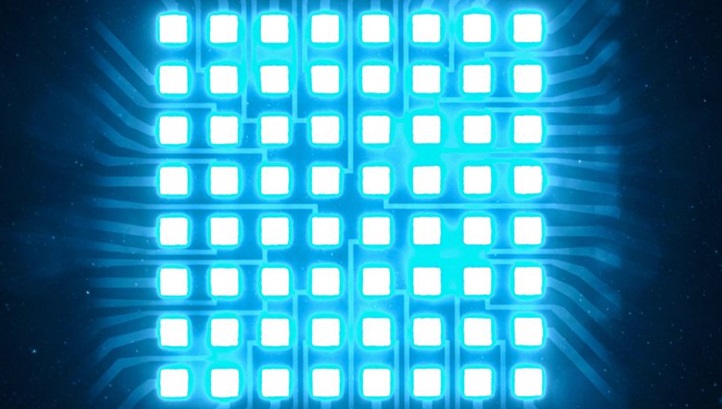Micro-LED array for high intensity lighting applications developed during the SMILE project

Micro-LED array for high intensity lighting applications developed during the SMILE project.
News
|
Innovation
|
International
|
Technology
(29/04/2024)
The iSMILE project, based on LED micro-light technology, is the first to complete the innovation cycle designed by the European Innovation Council (EIC). It has gone through the three EU programmes designed to support technological innovations at different stages of maturity. iSMILE has just been selected for an EIC Accelerator grant, aimed at commercializing innovations. Previously, it had received support from the FET Open and FET Proactive programmes, designed to create and develop new emerging technologies. The University of Barcelona had been the coordinator when the grants were received from these two European programmes, while in the case of the current Accelerator programme, the coordinator is the company that commercialises the innovation, the German company QubeDot.

Micro-LED array for high intensity lighting applications developed during the SMILE project.
News
|
Innovation
|
International
|
Technology
29/04/2024
The iSMILE project, based on LED micro-light technology, is the first to complete the innovation cycle designed by the European Innovation Council (EIC). It has gone through the three EU programmes designed to support technological innovations at different stages of maturity. iSMILE has just been selected for an EIC Accelerator grant, aimed at commercializing innovations. Previously, it had received support from the FET Open and FET Proactive programmes, designed to create and develop new emerging technologies. The University of Barcelona had been the coordinator when the grants were received from these two European programmes, while in the case of the current Accelerator programme, the coordinator is the company that commercialises the innovation, the German company QubeDot.
The first project, ChipScope, was initiated in 2016, given the market potential of gallium nitride-based micro LEDs. The project was supported by the FET Open programme (the equivalent of today’s EIC Pathfinder programme). With the participation of European partners, ChipScope demonstrated the possibilities of micro LEDs for various applications. The next stage was the SMILE (Scalable Structured Micro Illumination Light Engines) project, predecessor of the new iSmile and with partners from Spain, Italy and Germany. As part of the SMILE project, the company QubeDot, in addition to the technological development, was able to conduct extensive market research and establish a large network of interested end-users. These projects were made possible by the combination of micro LED manufacturing technology from the Nitride Technology Center of the Brunswick University of Technology and control chips designed in the UB’s Department of Electronic and Biomedical Engineering.
UB professors Ángel Diéguez and Joan Daniel Prades, who coordinated the two projects, explain: “The first project, ChipScope, investigated the feasibility of the technology and the possibility of using it to build chip-sized microscopes. When we saw its potential, we decided to extend its development to apply this technology to other fields, such as molecule manipulation, biological tissue control or sensors, already in the framework of the SMILE project. The potential of the technology is such that the company QubeDot has obtained specific investment, under the EIC Accelerator call, to build the infrastructure needed to produce it on a large scale and commercialise it”. The researchers add: “Micro LED display technology outperforms existing technologies in resolution (smaller pixels and therefore more image detail), brightness (more light emitted per pixel), energy efficiency (lower power consumption to emit the same light) and speed (ability to change images faster)”.
European Innovation Council news
UB professors Ángel Diéguez and Joan Daniel Prades, who coordinated the two projects, explain: “The first project, ChipScope, investigated the feasibility of the technology and the possibility of using it to build chip-sized microscopes. When we saw its potential, we decided to extend its development to apply this technology to other fields, such as molecule manipulation, biological tissue control or sensors, already in the framework of the SMILE project. The potential of the technology is such that the company QubeDot has obtained specific investment, under the EIC Accelerator call, to build the infrastructure needed to produce it on a large scale and commercialise it”. The researchers add: “Micro LED display technology outperforms existing technologies in resolution (smaller pixels and therefore more image detail), brightness (more light emitted per pixel), energy efficiency (lower power consumption to emit the same light) and speed (ability to change images faster)”.
European Innovation Council news
